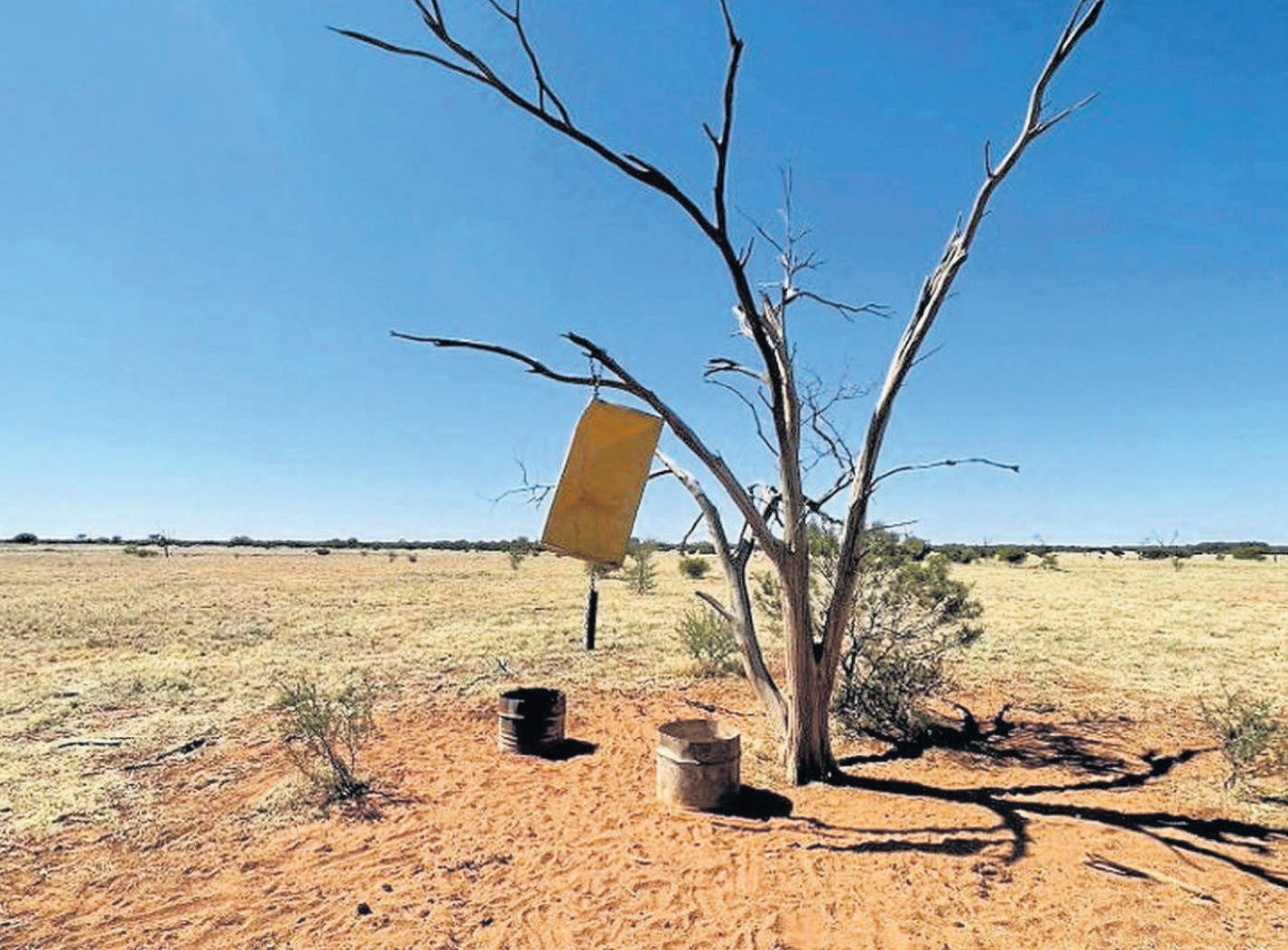Rewarding cattle to graze more evenly — the benefits of self herding

During the dry conditions of 2019, Lyndavale and Mount Ebenezer station owners Ross and Joanne Stanes opened up previously ungrazed areas and installed many watering points.
Located 260 kilometres south-west of Alice Springs, the properties carry 7000 cattle over 5300 square kilometres. A major challenge of grazing this country is that cattle spend most of their time within 3km of the watering points.
The Stanes decided to try self herding using attractant stations to encourage cattle to graze pasture around the new watering points rather than returning to familiar watering points.
Attractant stations use visual, sound and scent cues associated with variable food rewards to attract cattle. The stations are placed in a familiar location until cattle learn to associate an attractant with a food reward. The food rewards vary and are offered semi-randomly so they do not become predictable.
Mr Stanes uses a wind chime made out of an old road sign and a chain with a piece of poly pipe attached.
“The sign provides a visual cue and the poly pipe works as a wind-catcher so the chain bangs against the steel to create a sound cue,” Mr Stanes said.
“Raspberry cordial is sprayed around the attractant station to create a scent cue.
“We have achieved good results using two drums containing food rewards—one with a supplement (usually phosphorous) and the other a jackpot.”
Hitting the jackpot
Jackpots are highly desirable rewards that are paired with their own unique sound cue and intermittently provided to the cattle. This variability encourages a high level of anticipation from the animals.
“A splash of molasses attracts a strong response,” Mr Stanes said.
“One of the keys of self herding is to regularly change the reward and to offer it sparingly so it retains its novelty value.
“Once familiar with the attractant station, the cattle will readily follow it to new locations, making it easier to manage grazing pressure.”
Mr Stanes says he sets up an attractant station in an area with no cattle activity and returns to the spot several days later.
“Using attractant stations has decreased the time involved in familiarising cattle with a new watering point,” he says.
“Previously, once the cattle were moved to a new water, they would often head straight back to the old watering point.
“In the past it could take up to a week to familiarise cattle with a new watering point but now it takes one day.
“We have integrated self herding techniques into our current supplementation program, so there has been no significant increase in workload—and we save time and money associated with moving cattle back to new watering points.”
Mr Stanes believes self herding techniques are an investment in the future, saving work in the long run.
“I understood how using the attractant stations could work but I wasn’t expecting the response,” he said.
“It has amazed me with how well it has worked.”
The Stanes plan to make more wind chimes for the supplement drums near each of their watering points and turn them into static attractant stations.
They believe their cattle have a better response to a mixture of reliable and predictable stationary placements and dynamic stations that are moved around the property.
For more information about self herding and the Central Australian Self Herding project, visit futurebeef.com.au and search for ‘self herding’ or contact Northern Territory Government pastoral technical officer Lakota Taber on 08 8951 8144 or lakota.taber@nt.gov.au.
More information
← Central Australian self herding project
← Grazing with self herding to improve performance of pastoral cattle
← Self herding success